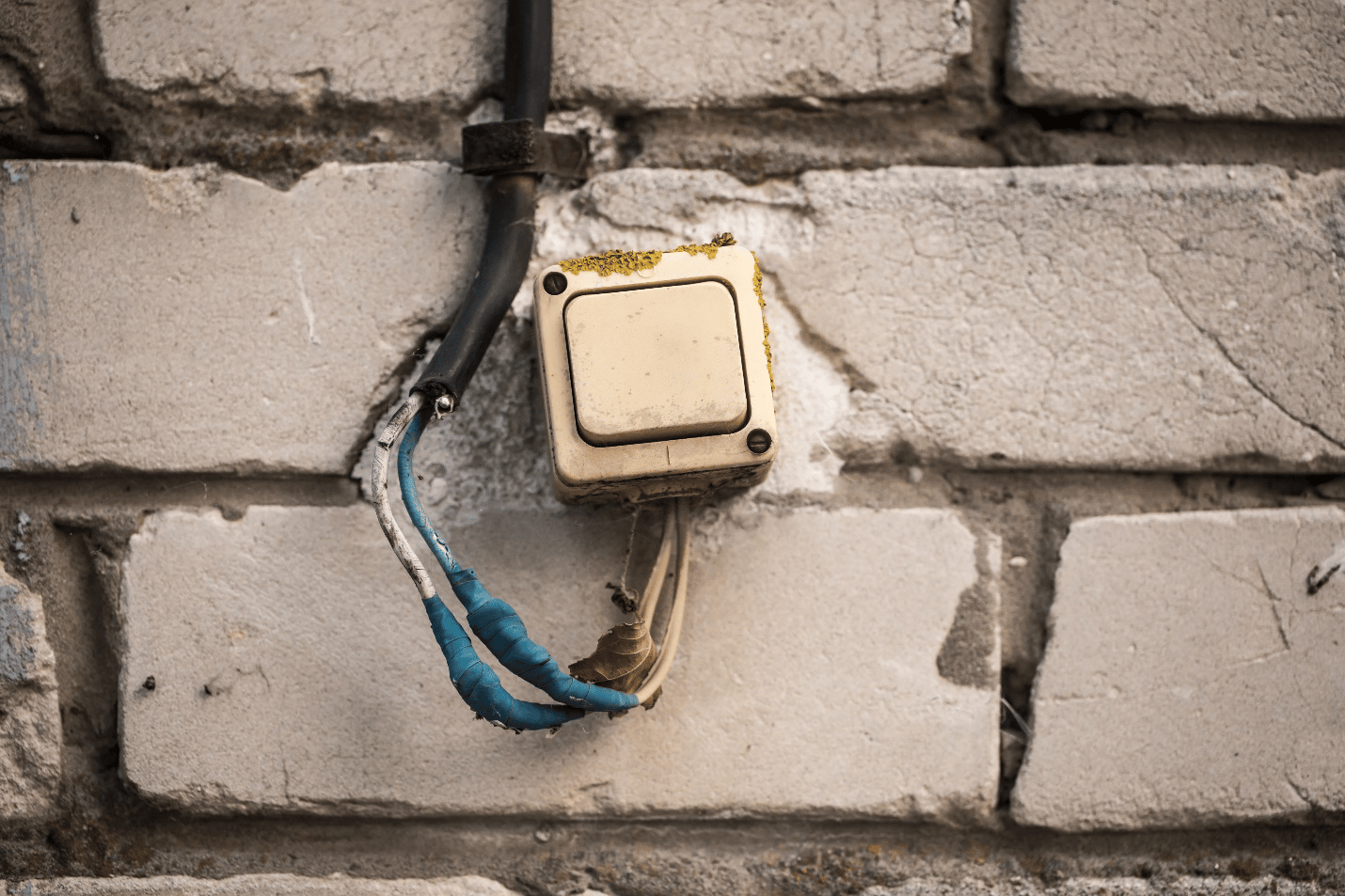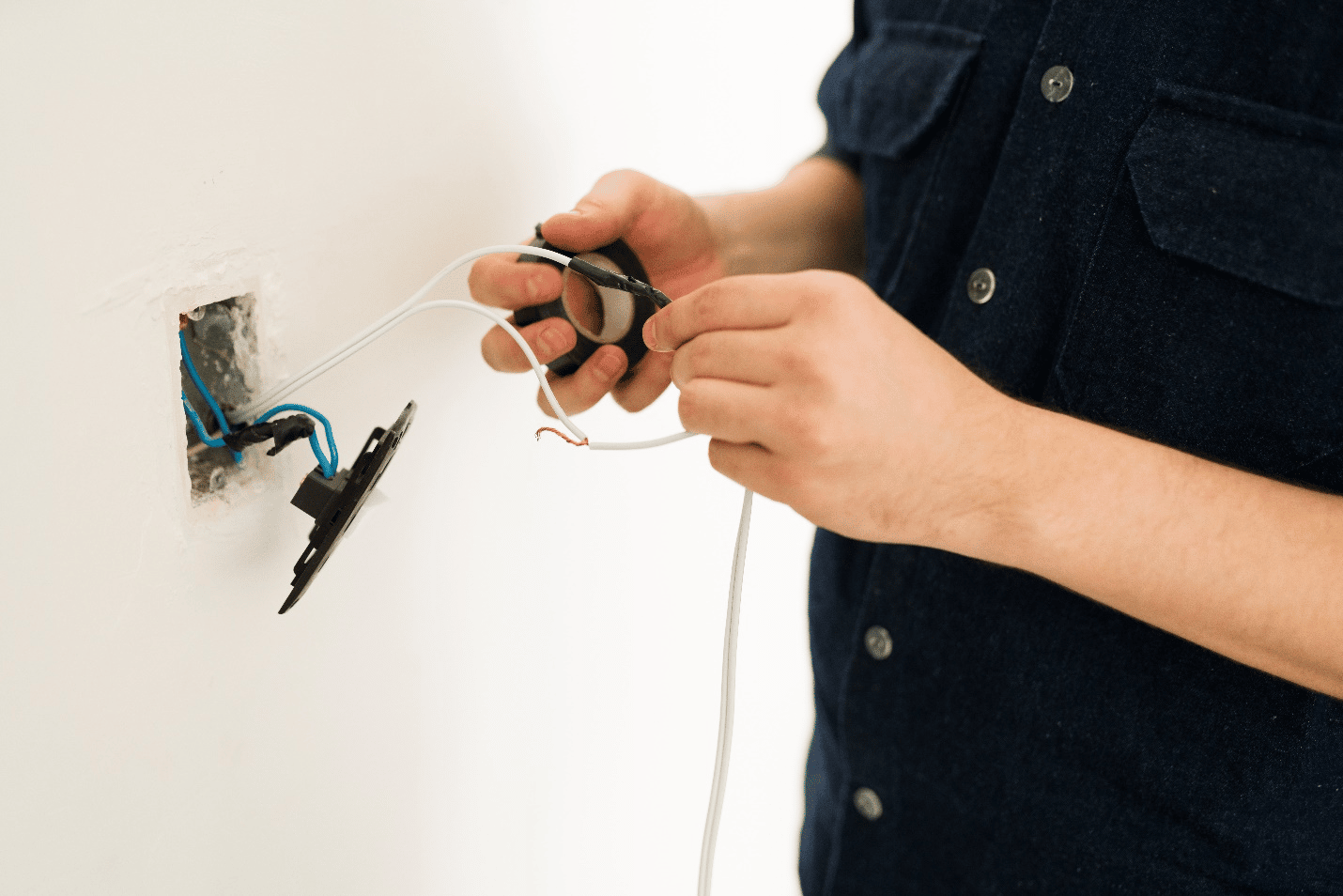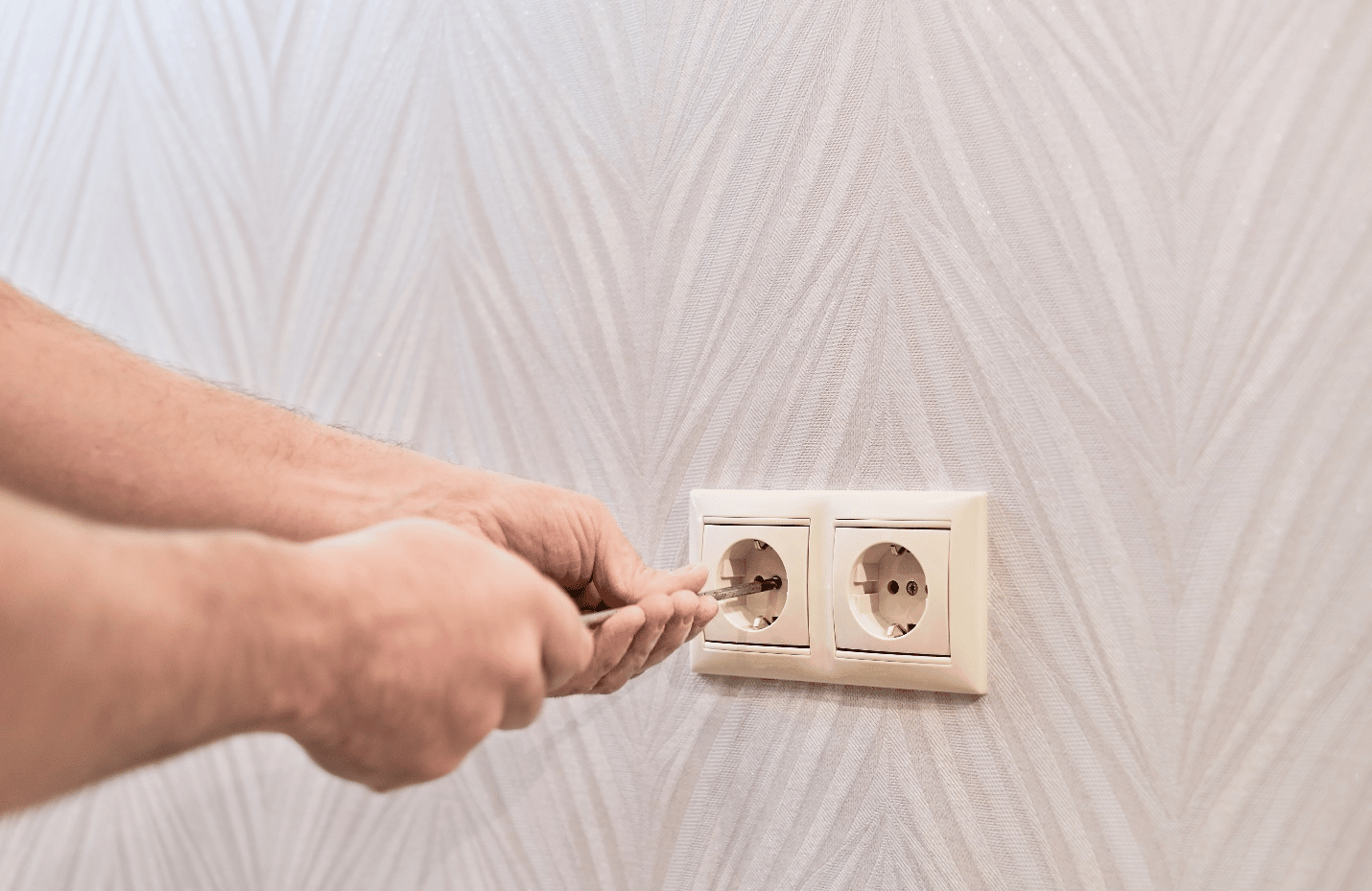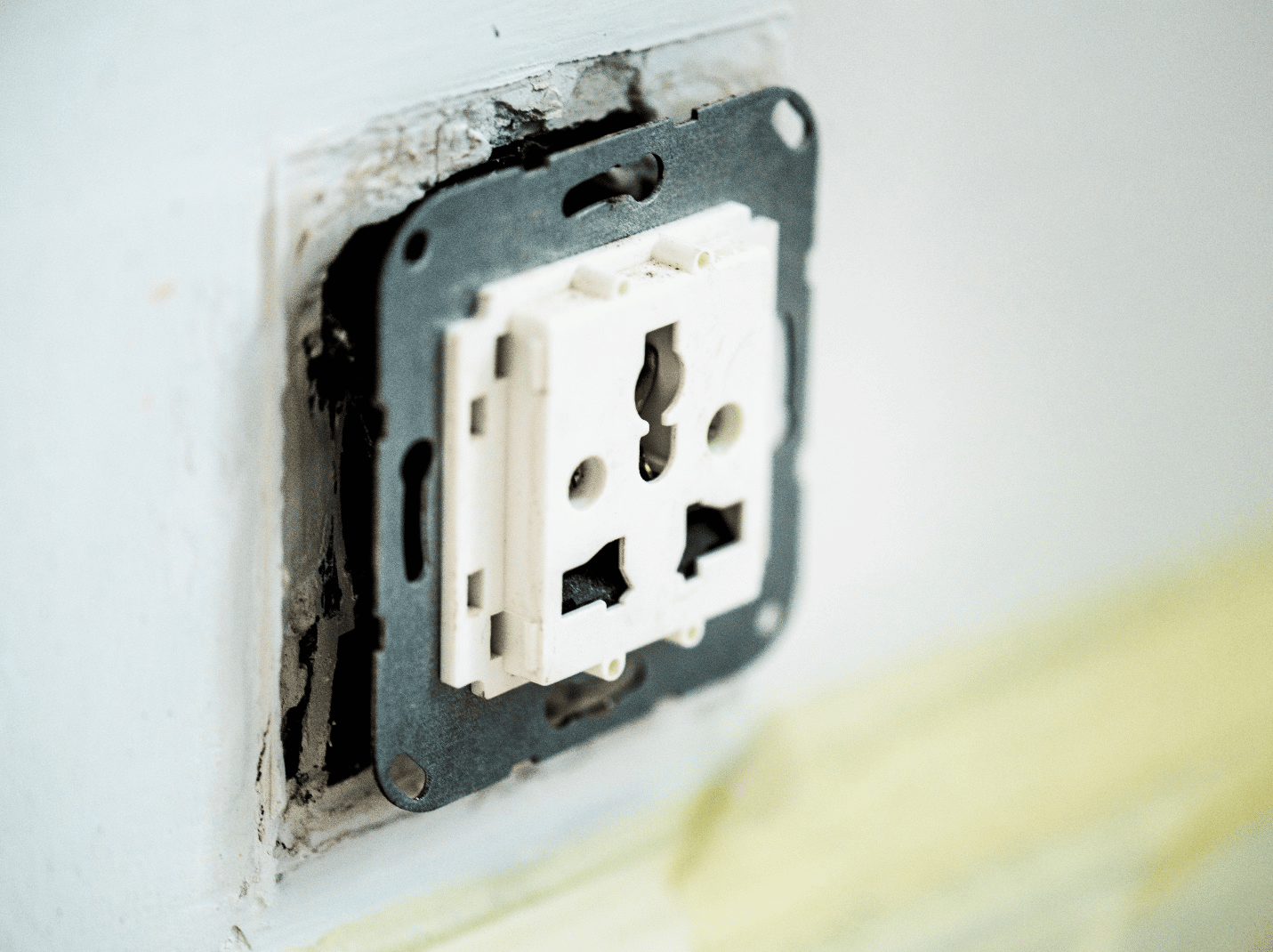You might not know how to fix a loose electrical wall outlet box as a homeowner. It is for this reason you need to consult a professional electrician. This article highlights causes, signs, and ways to fix a loose electrical wall outlet box.
What Causes an Electrical Wall Outlet Box to Loosen?
Worn Outlets
Through prolonged usage, the outlets in your home can become damaged, particularly if the cords are not disconnected properly.
Pulling on the cord can cause the outlet box to become loose and less effective. That is why it is important to be careful when unplugging your extension cords or chargers. The plug should fit snugly into the outlet box, not too loose or tight.
Old, Ungrounded Outlets
In older houses, they might be outdated and electrical wiring worn out. It is advisable to replace old and ungrounded outlets with new ones to reduce the risk of electrocution and fire. You should, however, consult a professional electrician to avoid further damage.
Outlet Boxes That Are Not Childproof
Avoid relying on plastic outlet covers if you have toddlers in your house. Curious toddlers can easily tamper with them and make them loose.
In this case, we recommend hiring a licensed electrician to install tamper-resistant receptacles (TRR). These devices will deactivate the outlet whenever a foreign object is inserted, preventing potential hazards.
Poorly Installed Outlets
Outlets that are not wired correctly can be dangerous and majorly cause residential electrical fires. Because of this, it is advisable to hire a licensed electrician for any electrical services to ensure safety. If you notice an outlet feels warm when you touch it, consult an electrician for an inspection.
Signs Of a Loose Electrical Wall Outlet Box

Some signs you need to watch out for include the following:
- Electric shock: A loose electrical box can be a shock hazard. It is most likely to occur when plugging or unplugging a cord and can be dangerous for you and your family.
- Cord and plug damage:If you have to force the plug into the socket, it is a sign that there is an issue that needs addressing.
- Unreliable electricity:If an outlet delivers a strong and fast charge at some times and a weak and slow charge at other times, it can be frustrating and harmful to the battery of the charged device.
- Cracked faceplate:If the faceplate of an outlet is loose, it could potentially expose live electrical wires. In this case, it is unsafe to use the outlet until a professional electrician fixes the faceplate properly.
- Plug falling out of the outlet:If your plugs are loose, it shows a faulty electrical outlet and a potential fire hazard. Loose outlets can be dangerous since the wire connections are not secure and can lead to electrical arcing or fire.
What You’ll Need
Equipment
- Voltage detectors are tools for measuring the electricity level in a system at a given time. It allows you to confirm that all power has been turned off before beginning any work on the system, reducing the risk of electrical shock or damage.
- Insulated matting is a protective barrier between employees and the floor.
- Flathead screwdriver
- Phillips head screwdriver
Materials
- Metal wall plate spacer
- Electrical box extender
- Electrical outlet plastic shims
How To Fix a Loose Electrical Wall Outlet Box

Here is a step-by-step guide on how to fix a loose outlet box.
Shut the power off
Find the main breaker or main circuit box of your home. You can find it on a wall in your home’s hallway, basement, or garage. It controls the electrical supply to your entire house.
To cut the power completely and prevent the risk of electrical shock while working on repairs, locate the circuit in the main circuit box that controls the room with the outlet, then switch it to the “OFF” position. Use the voltage detector to ensure the outlet is not live.
Unscrew the cover plate
To access the electrical wiring behind an outlet, use a screwdriver to loosen the screw in the center of the cover plate by turning it counterclockwise. Once the screw is loose, carefully remove the cover plate from the wall to reveal the outlet and wires in the electrical box. Ensure to keep the screwdriver safe to avoid losing it during repairs.
Tighten the outlet’s loose screws
Occasionally, an outlet may become loose over time because of the screws becoming loose. To fix this, use a screwdriver to tighten the screws at the top and bottom of the outlet by turning them clockwise. Next, wiggle the outlet from side to side to check whether it is secure.
Use electrical spacers on recessed outlets
To secure an outlet, you can use electrical spacers. They are small C-shaped clips with snaps on the top and bottom. To use them, align the snaps on two spacers and press them together until they click. It will secure the outlet in place.
First, loosen the screws on the outlet to install the electrical spacers. Then, position the spacers on the screw shaft directly behind the head of the screw. Finally, tighten the screws back into the wall to ensure the outlet does not move around.
Use an electrical box extender if the spacers don’t work
An electrical box extender secures an outlet in place. It is a rectangular plastic piece that fits into the outlet hole, allowing you to screw in the receptacle securely.
To install an electrical box extender, remove the outlet from the wall by unscrewing it completely. Pull it out from the wall, but leave it connected to the wires. Next, slide the outlet through the hole in the center of the extender. Finally, push the extender flush against the wall and screw the outlet into it.
Use a wall plate spacer to hold the electrical box in place
If the outlet is still loose after installing the electrical box extender, the electrical box inside the wall has likely come loose. Here, you can use a wall plate spacer.
First, remove the outlet from the wall by unscrewing it, leaving the wires connected. Then, slide the wall plate spacer behind the outlet, and reattach it to the wall. It will secure the outlet in place.
Reattach the outlet to the electrical box by screwing it in through the holes in the top and bottom of the spacer. It will help to keep the outlet from moving around and prevent potential hazards.
After securing the outlet, put the cover plate back on and restore the power supply.
Once you have completed your repairs, use a screwdriver to put the cover plate back in place, hiding the wires inside the electrical box. Finally, go back to the circuit breaker and switch it to the “ON” position to restore power to the outlet.
How Do You Prevent Your Electrical Wall Outlet Box from Becoming Loose?

- Avoid pulling on the cord when unplugging devices from the outlet. As you’d expect, it can weaken the outlet box and cause it to become loose.
- Tighten the screws on the outlet if they become loose over time. It will keep the outlet secure against the wall.
- Use tamper-resistant receptacles (TRRs). These devices will deactivate the outlet when one inserts a foreign object, preventing the outlet from becoming loose.
- Consider using electrical box extenders or wall plate spacers. They can provide additional support for the outlet and help to keep it secure in the wall.
- Always seek the help of a licensed electrician if you notice any signs of a loose outlet.

